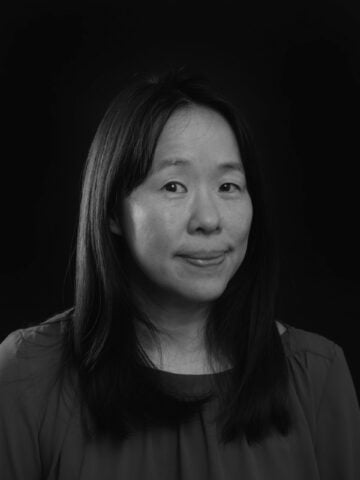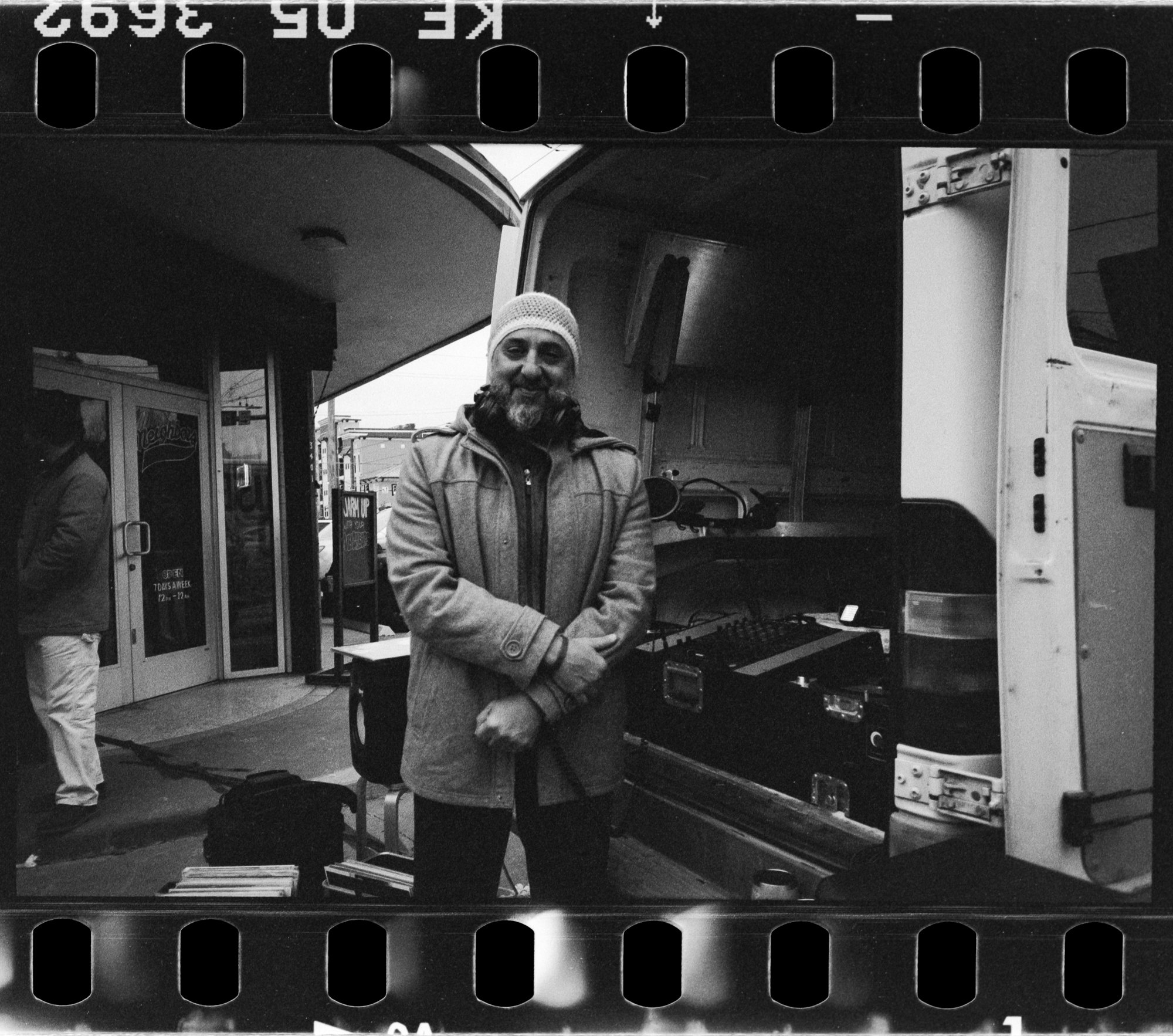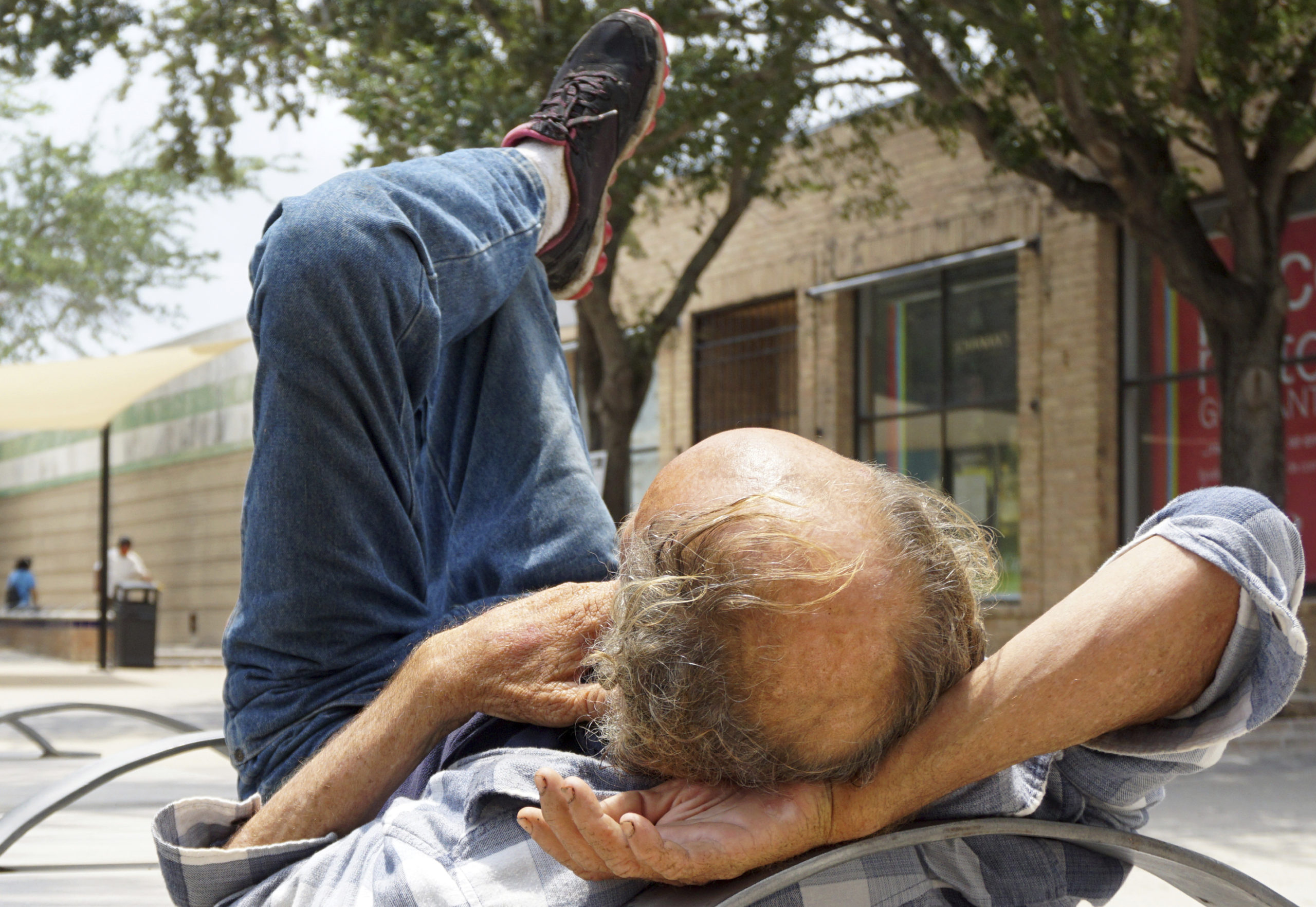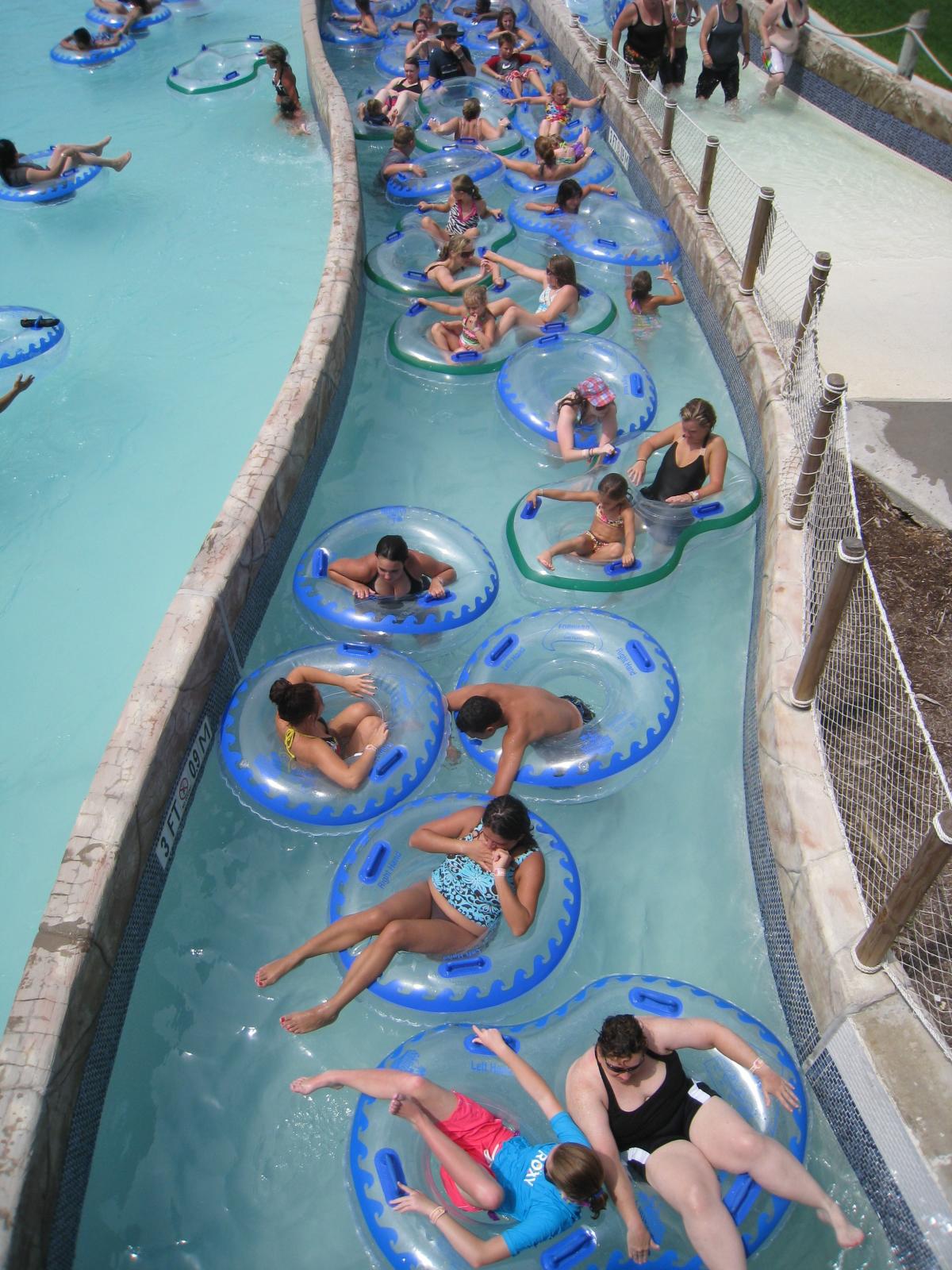Carol Samuel, 76, was born, raised, and educated in Third Ward, a sprawling and storied community of color in Houston. She now lives on the third floor of the Law Harrington Senior Living Center, where she and roughly half of the residents have disabilities or severe health problems. Even before Hurricane Beryl hit the city on July 8, spawning a blackout, the elevators were broken.
“When the hurricane came through, many people in this building, along with myself, were more or less restrained to their suite or to their apartment,” Samuel told the Texas Observer in an interview.
There was no security because the management said they could not afford it, according to Samuel. For three days, no one came to offer help. The senior center had only enough backup generators to power hallway lights, but when the electricity failed, air-conditioning and even the water went along with it. Although some residents had saved up water in pots, there wasn’t nearly enough. Residents could not access the internet or make calls. They had no information about cooling centers.
For Samuel, using the stairs to escape would have been nearly impossible. After graduating from Texas Southern University, she taught grade school and later college classes, standing on her feet for hours. These days, she’s able to stand for only ten minutes. “After that, my feet start getting numb or my joints start getting stiff,” she told the Observer. Samuel has neuropathy, a disease commonly caused by diabetes that deteriorates the nerves in the feet. Luckily, after three days, the electricity returned.
But a shocking lack of support provided for Samuel and others in Houston neighborhoods, including many left to fend for themselves for as long as 10 days in hot homes without water, air conditioning, or lights in the aftermath of Hurricane Beryl, reflects a larger breakdown in communication and coordination between the state, CenterPoint Energy, Harris County, the City of Houston, and communities across the region, according to interviews and an Observer examination of city records and county emergency management plans. Though Beryl was only a Class I Hurricane, 38 people died in Greater Houston in the aftermath—12 in Harris and Galveston counties alone perished from heat-related issues, medical examiners’ records show.
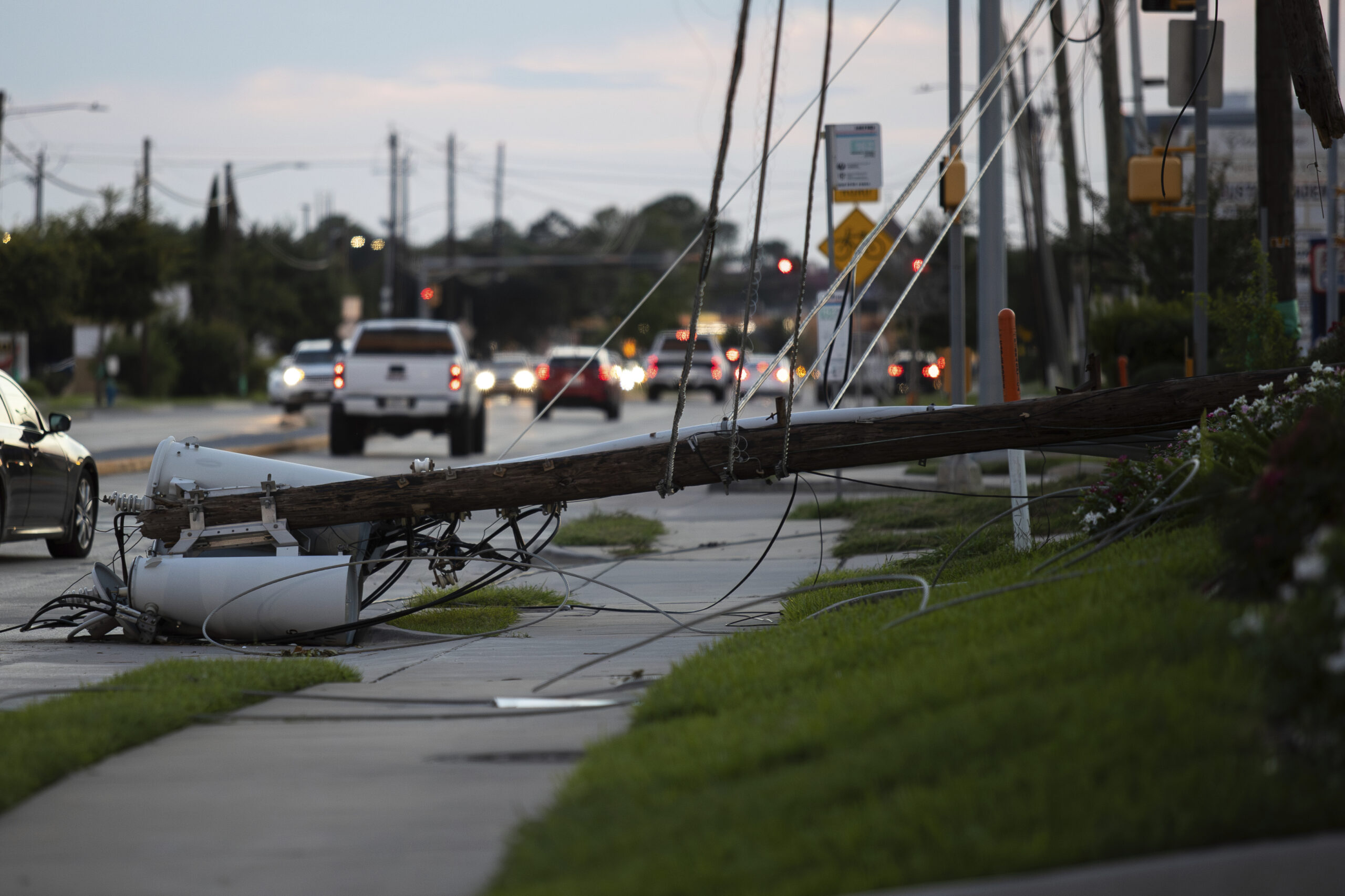
Even as state, city, and county leaders blame CenterPoint for the disastrous power outage that befell 2.26 million CenterPoint customers after Beryl hit, Third Ward residents and community leaders say city and county leaders also failed to coordinate and communicate about emergency responses, leaving fragile and elderly people exposed to intense heat and without information or access to cooling centers as the blackout continued.
According to city records, Third Ward, a low-income community of roughly 16,000 residents, 60 percent of whom are Black and 38 percent of whom fall under the federal poverty line, didn’t have a cooling center until five days after Beryl hit. That one, at Emancipation Park, was open only four hours a day, and community leaders told the Observer they were not informed about its hours until more than a week after the hurricane. City Council member Carolyn Evans-Shabazz organized water distribution outside Third Ward Multi-Service Center right after the storm hit, but that facility lacked electricity and did not open as a cooling center until nine days after the storm. Smith Neighborhood Library finally opened 10 days after Beryl hit.
Those three Third Ward city-operated facilities, which are usually designated as disaster resource centers, share the same power line that consistently fails in severe weather. Prior to the storm, CenterPoint had spent $800 million on 20 backup generators, which could have been placed in community multi-service centers across Houston. None were used.
For Third Ward residents, the nearest cooling center initially was five miles away at the Sunnyside Multi-Service Center. But 30 percent of community residents do not own vehicles, and there is no direct METRO bus route from Third Ward to Sunnyside. Residents, who were instructed by the City to call 311 for transportation, said phone lines were tied up.
Records obtained by the Observer reveal that other predominantly low-income communities of color in Harris County, including Galena Park, also were never provided with any cooling centers.
It was hard for Houston and Harris County residents stranded in homes without electricity to find lists of cooling centers, even for those who had rides or cars and somehow managed to log onto the internet. Houston and Harris County’s plans for emergency response to natural disasters are not on their websites. The Houston Office of Emergency Management refused to disclose its plans to the Observer for responding to hurricanes and extreme heat during power outages, citing confidentiality for “the purpose of preventing, detecting, responding to, or investigating an act of terrorism or related criminal activity.”
Brent Taylor, chief communication officer for the Houston Office of Emergency Management, told the Observer that immediately after Hurricane Beryl hit, only the Southwest Multi-Service Center,—which serves the Gulfton and Sharpstown areas—and Lakewood Church—a megachurch along Highway 59 in the affluent Greenway-Upper Kirby area—were available as official cooling centers. More were added in the following days. “This is reflected in the number of available resources growing as the damage assessments were conducted and power began coming back on,” Taylor said.
The Excessive Heat Plan developed by the Harris County Office of Homeland Security and Emergency Management, which largely serves heavily populated but unincorporated areas, describes how local governments are supposed to collaborate with community organizations to prepare and respond to emergencies. The plan calls for working with “volunteer and service organizations, food banks, faith-based groups, immigrant groups” to identify vulnerable populations and make sure they have access to cooling centers, transportation, communication, and in-home visits if needed.
Spokespeople for the city and county emergency management offices told the Observer that government leaders work with larger umbrella organizations, such as United Way, Salvation Army, Catholic Charities, and the YMCA of Greater Houston to coordinate with community-based non-profit organizations.
But Third Ward community leaders, including those at the resident council of the Houston Housing Authority’s largest public housing complex Cuney Homes, the tenants council at the Law Harrington Senior Living Center, and SHAPE Community Center told the Observer that no one reached out to them.
“We were asking, ‘Does anyone care about us?’” Law Harrington Senior Living Center’s tenant council president Debbie Deacon told the Observer.
Ed Pettitt moved to Third Ward in 2011, and, ever since, the environmental justice researcher has been volunteering in the community, including for the Emancipation Economic Development Council and as a founder of the Columbia Tap Trail to improve neighborhood nature trails. In 2017, Pettitt became a committee chair for former Houston mayor Sylvester Turner’s Complete Communities Initiative in Third Ward and later the vice president of the Greater Third Ward Super Neighborhood #67.
Houston oversees its 88 super neighborhoods—a community planning area designated by the city —through the Mayor’s Assistance Office of the Department of Neighborhoods. But even Pettitt, a super neighborhood leader, wasn’t informed when a cooling center finally did open in Third Ward’s Emancipation Park—even though he lives two blocks away. He said he didn’t know about the center until four days after the storm arrived: “By that point, people had already found a way to survive. So I don’t think that was too helpful.”
Pettitt says that while Third Ward City Council member Evans-Shabazz is quick to relay information she knows, “The City doesn’t engage the super neighborhoods, and especially in disasters, as much as it should.”
Hurricane Beryl had again left the city-operated sites in Third Ward—Emancipation Park, Third Ward Multi-Service Center, and Smith Neighborhood Library —powerless. Since Hurricane Harvey in 2017, Pettitt had been complaining to the City that those sites needed backup or solar generators, as well as disaster response supplies. Nothing happened. “Those three entities are on the same power lines. So whether it was Winter Storm Uri, Hurricane Harvey, or Hurricane Beryl, if the power goes out or we overwhelm the grid, those entities will be out of power as well,” Pettitt said. “It should be the first priority of this administration to equip every city-run multi-service center with backup power generation.”
Although Harris County’s Excessive Heat Plan, updated on March 2024, also guides it to coordinate with the local electric utility to identify and develop procedures for the operation of “… cooling centers that could be exempt from blackouts,” Brian Murray, deputy coordinator of Harris County’s emergency management office, told the Observer that it is CenterPoint who maintains the database of critical facilities prioritized.
Taylor, the city emergency management spokesperson said, “CenterPoint has a seat in our Emergency Operations Center for every incident involving significant power loss. As response operations began, we worked with them to both understand their restoration cadence and provide them with information on critical situations where they could escalate operations, if possible.”
In an email, a CenterPoint spokesperson told the Observer, “When restoring power, we prioritize facilities vital to safety, health, and welfare, such as hospitals, water treatment plants and public service facilities.” CenterPoint declined to clarify whether “public service facilities” included cooling centers.
CenterPoint’s delay in restoring power to residents, along with the city and county’s delay in providing critical services and resources proved deadly. Hurricane Beryl’s death toll in the greater Houston area is at least 36 people.
Of 20 Beryl-related deaths reported by the Harris County medical examiner, 12 were of people over 60, and eight were due to hyperthermia. Although the Galveston County Medical Examiner’s Office told the Observer they did not take body temperatures of those who had died in the wake of Hurricane Beryl, reports from the Galveston County medical examiner’s office show four of the five deaths that had occurred there in the week after the storm were also heat-related.
Oscar Rodriguez, 87, died of hyperthermia midday in the few hours between his family’s morning and evening visits on July 10, two days after the storm hit. The temperature in Houston reached 93 degrees Fahrenheit that day. His home in Near Northside was more than four miles away from the city’s closest cooling center.
Janet Jarrett, 60, told reporters that she did what she could for her older sister, Pamela Jarret, who relied on a wheelchair and a feeding tube. On their fourth day without power, Janet woke up to Pamela gasping for air. The sisters lived in Spring, 14 miles away from the nearest Harris County cooling center.
An interactive map shows Harris County cooling centers and heat-related deaths post-Beryl. (Josephine Lee)
Murray, deputy director of Harris County’s emergency management office, told the Observer that the central emergency management office does not oversee the cooling centers; instead, individual county commissioners identify and set up cooling centers in their precincts. The county’s plan guides the emergency management agency to work with local groups to make sure information is quickly disseminated to residents and that transportation is provided to those who need it.
Spokespeople for both the city and county said that information was disseminated through the media, nongovernmental organizations, and through an emergency alert system. But in order to get alerts, residents must sign up to receive voice calls, text messages, and emails from the city or county. Roughly 220,000 people are signed up with AlertHouston and 60,300 are signed up with ReadyHarris Alerts—a tiny fraction of Harris County’s 4.7 million residents.
“Communication during disasters is always challenging. During the May derecho and Hurricane Beryl, we used every possible channel to let residents know how to find resources such as cooling centers, food, water, and ice.” Murray said. “We will continue to look at how to better connect with our communities, especially when lack of power complicates our ability to be heard.”
Delores Ford, who is president of the Cuney Homes Resident Council, said the power was restored to her complex’s 553 units two or three days after the storm hit, but representatives from the Houston Housing Authority didn’t arrive until the following week. About half of the roughly 1,200 residents there are seniors and 20 percent have disabilities, she said.
Ford said that although she was checking the internet for information to provide other residents, she wasn’t sure when the city’s cooling centers opened or if residents could access transportation services. “In the end, we were able to take care of ourselves,” Ford said. The council called as many residents in the building as they could, and if she found that “There’s something that somebody needs, and we don’t have it in the building, I’ll go out and it will come out of my own pocket.”
Harris County policy calls for the government to work with local groups to determine the location of vulnerable populations, meet their needs, and “develop a plan for coordinating in-home visits.” Those with disabilities, who are medically fragile, or who have limited mobility are encouraged to call 211 to opt into the State of Texas Emergency Assistance Registry (STEAR). But the registry includes this disclaimer: “Registering for STEAR doesn’t guarantee you assistance in an emergency.”
It is up to local agencies to follow up with area residents who are registered on the STEAR database, Texas Division of Emergency Management’s Media and Communications Section Chief Wes Rapaport told the Observer.
Taylor said a team made up of Houston firefighters completed more than 1,500 in-person wellness checks and made contact with 756 registrants on the city’s list in the aftermath of the storm. There are 3,852 Houston residents signed up with STEAR. . “We perform multiple levels of wellness checks, including automated calls, person-to-person calls, and in-person wellness checks.”
Murray said the county emergency office sends a mass notification, including a needs survey, to residents on their STEAR rolls. If residents need assistance, they work with the fire departments to conduct personal phone calls or visits.
Deacon, the Law Harrington Senior Living Center tenant council president, said that while first responders did make in-home visits at her facility, it wasn’t until five to 10 days later, after power was restored, when STEAR registrants finally were contacted.
A product of the civil rights movement, the SHAPE Community Center has seen Houston’s historic Black Third Ward community in south central Houston through many ups and downs. In the past 55 years, its staff and volunteer members have fought desegregation and police brutality, fed and educated Third Ward’s children through afterschool and summer programs, served the community’s homeless population with food, clothing, and social services, organized elders, and aided residents in natural disasters.
During Hurricane Harvey, Winter Storm Uri, and the May 2024 derecho, even when cooling centers or shelters were not up and running in Third Ward, SHAPE managed to keep its lights on to let people sleep, eat, and apply for other resources.
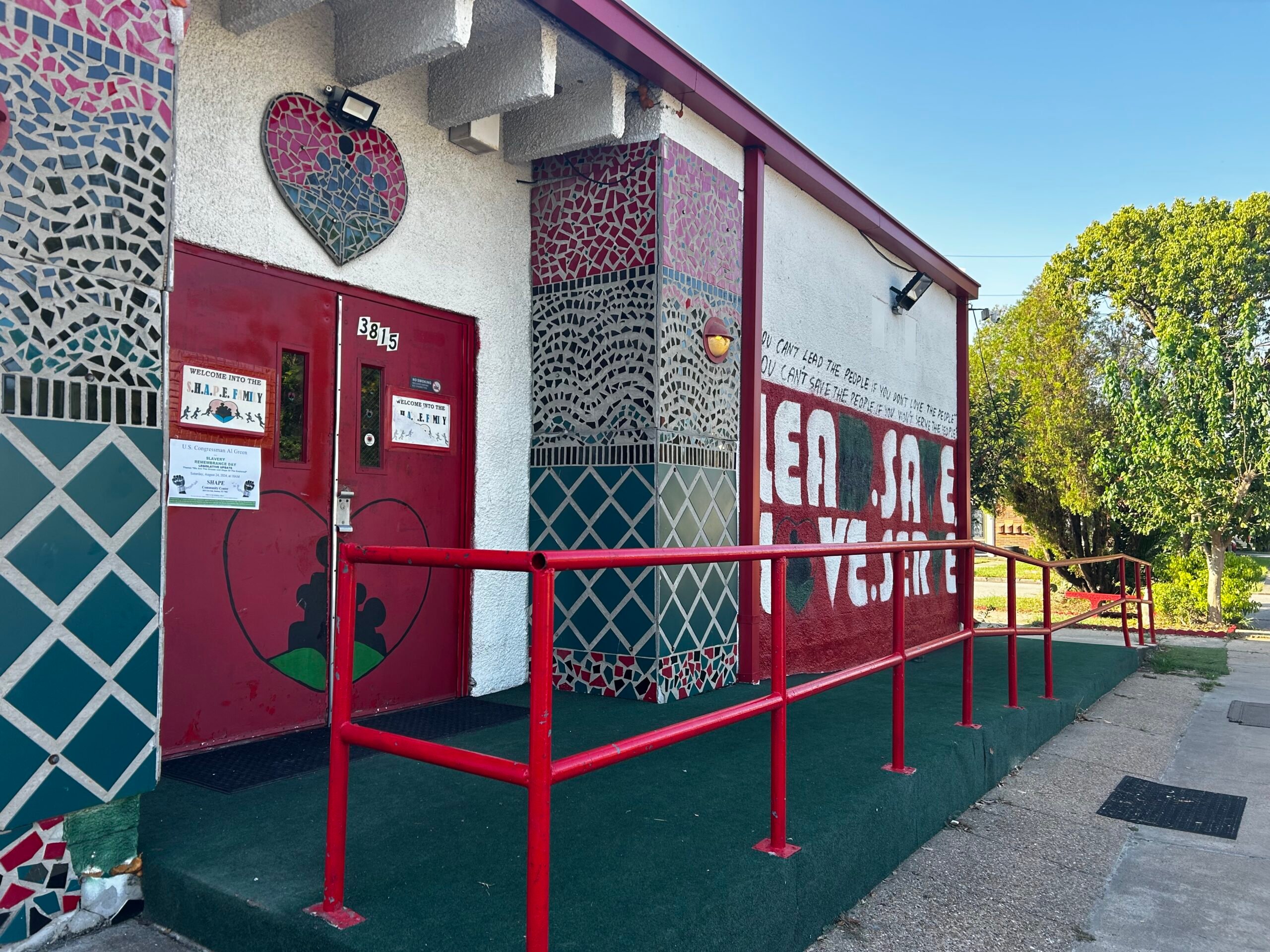
But in the aftermath of Beryl, its usually buzzing building on Live Oak Street sat in the dark for 10 days. During that time, its staff scrambled to meet its youngest and oldest members’ needs, calling, visiting, delivering food and water to seniors, and spending $4,000 to charter a bus to bring kids to the Houston Children’s Museum, which they used as a temporary location to keep their programs running. At 76, SHAPE’s founder and director Deloyd Parker slept and made phone calls from his car, since the power was out in his home too.
When CenterPoint arrived, Parker told the Observer that it took only 15 minutes for them to restore power. “They didn’t even have to use a ladder. I watched them get a long pole and push something that had come down loose. And I heard our alarm go off in the center. I said, ‘We got power.’”
Known in Third Ward as the “United Nations of the Hood,” Parker says community members can “come to SHAPE for almost anything they need” and that they’ve learned not to rely on the government. SHAPE stands for Self Help for African People. But the long delay in restoring power to this longtime community organization after yet another natural disaster raises larger questions about why residents in Houston’s communities of color, like Third Ward, seemingly always have to fend for themselves.
While probes continue into the heat-related deaths and into why CenterPoint didn’t deploy its backup generators, private citizens like Parker are acting to try to address the public safety hazards posed by blackouts, which are becoming more common—both during hurricane season and beyond. Parker told the Observer that SHAPE is planning to shell out $30,000 to pay for its own generator.
Pettitt, the environmental justice researcher, recently volunteered his time to help Cuney Homes apply for a federal grant to get generators for the city’s largest public housing complex. (On July 18, Megan Thee Stallion announced she’s donating her own money to provide backup generators for senior homes in Houston.)
“I give the city an ‘F’ for failure,” Parker said, “failure to respond.”
